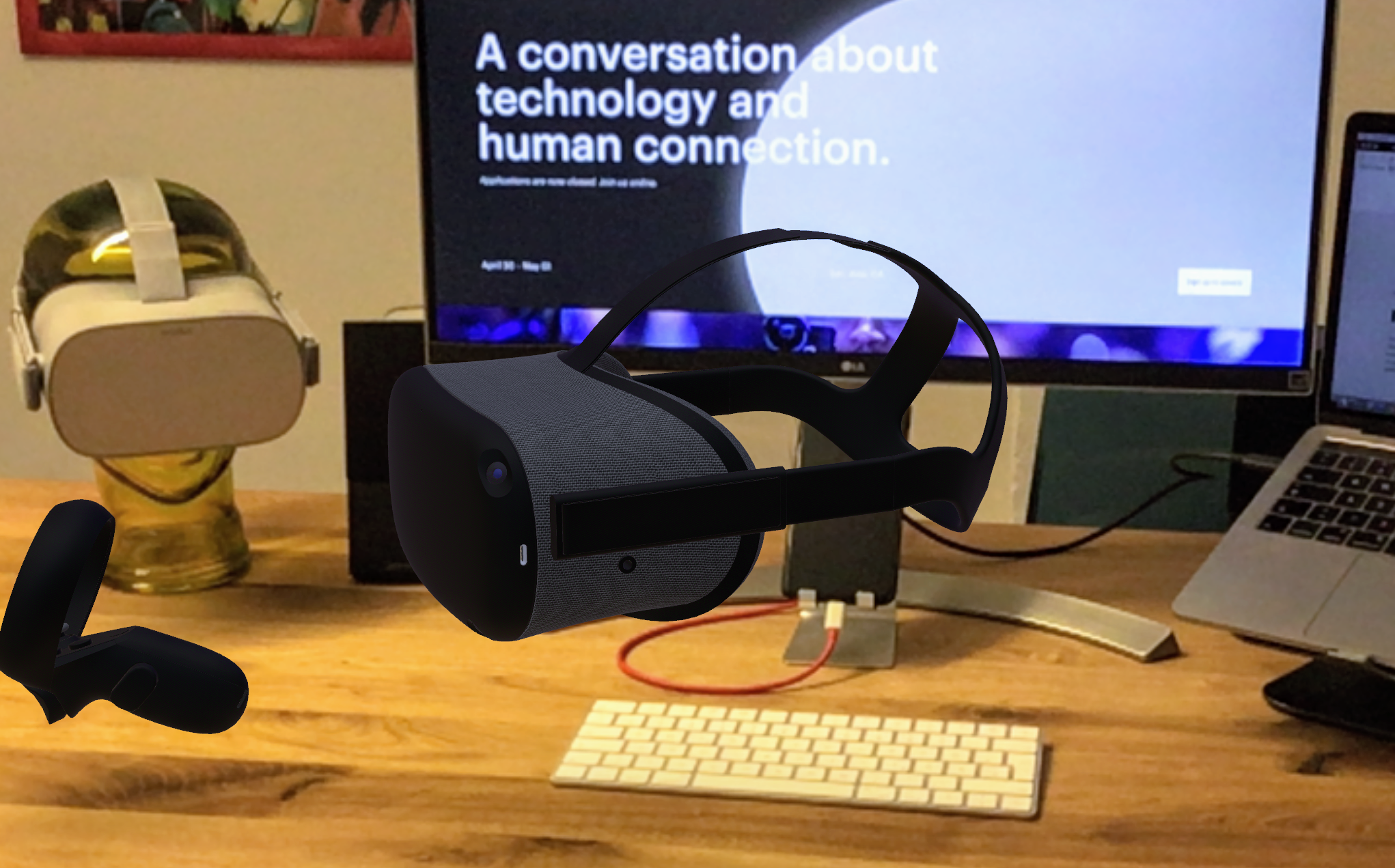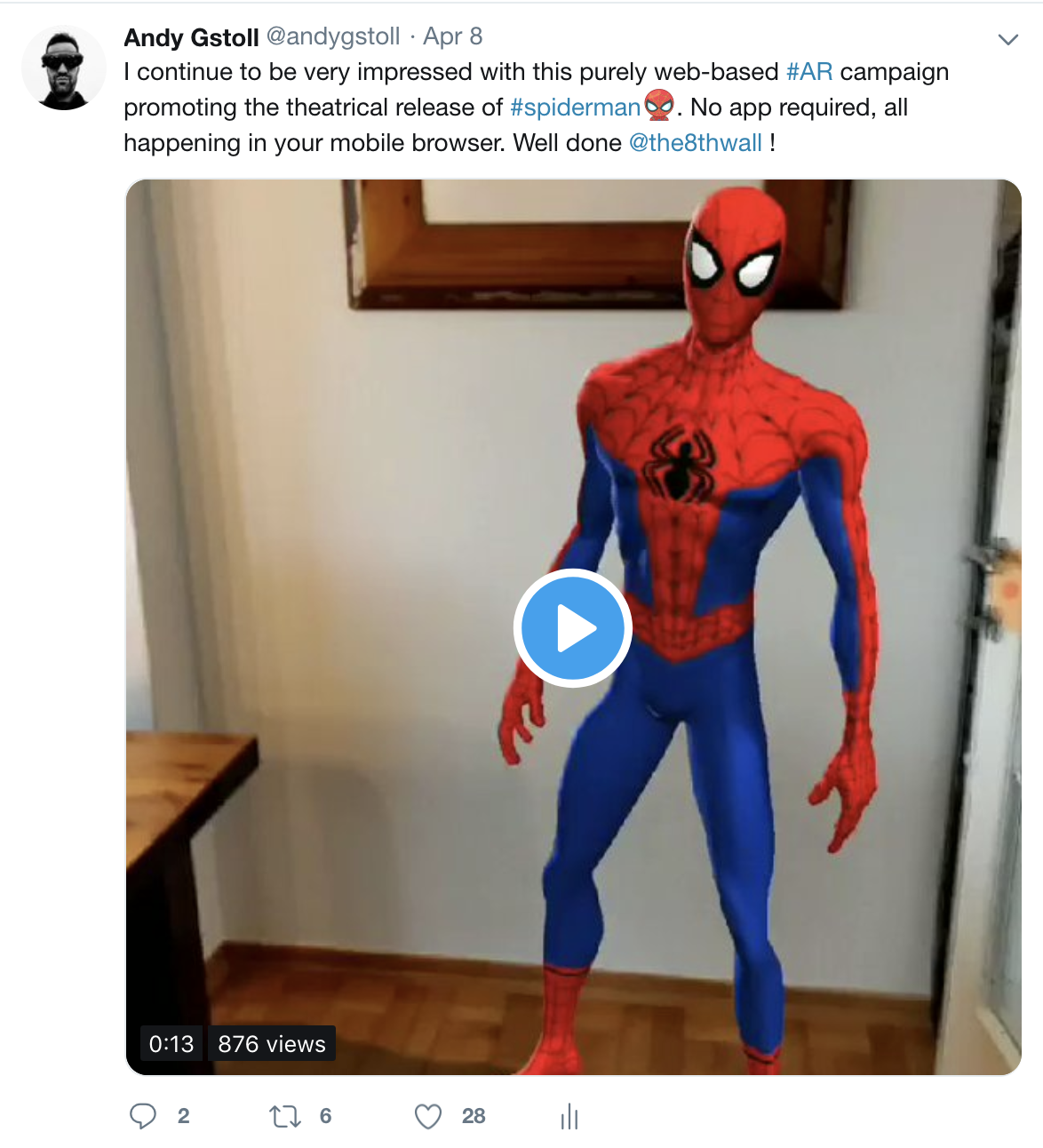
After Facebook’s announcements at the F8 developer conference today, many of us are excited about finally being able to push that “pre-order now” button for an Oculus Quest headset. For those of you still hesitant to make that purchase, this article could give you that little nudge you require to get your credit card out of the wallet. However, this will not be a review on the Oculus Quest’s features and the power of its highly performant two 6DOF controllers, nor will it get into why the Quest’s ability to function wirelessly and completely independently from a PC is a phenomenal achievement. This will also not give you any benchmarks on why $399 is a very attractive price, no! The sole purpose of this article is to give you the closest thing possible to actually physically having the device in your hands or on your face – with augmented reality, right here in your browser.
Visit this page on your iPhone/iPad in Safari running iOS 12 to view in AR.
Tap on the image above to launch the AR view.
As you might have figured out by now, I am not only excited about the availability of the Oculus Quest, but also about the ability of presenting it to you in AR without asking you to download an app. Web AR continues to grow into our browsing experience and with Apple in the game for almost a year now with its AR Quick Look, expectations are only increasing. If you are an Android user, you might be fully aware of the limitations of Web AR by now as the above “AR Quick View” is only possible on iPhones and iPads running at least iOS 12 and in Apple’s Safari browser. But that’s not the only limitation unfortunately. As much as I am excited about AR Quick Look and the ability to place 3D content on top of the real world, being able to interact with it is key, especially a technical product like the Quest (an IKEA sofa is obviously different). During the development process of the 3D model above, I would have loved to give you the ability to tap on certain parts of the device, for example the front facing cameras, to trigger an animation or additional media explaining the room tracking or the “guardian” boundary preventing you from bumping into walls. But I couldn’t, because that’s not what AR Quick Look was designed to do, at least not for now. I have no doubts though that Apple will add these and more features to its web AR capabilities in the future.
If you are an Android user and you are still reading this, I have good news for you. Google is also preparing AR superpowers for its Chrome browser and it may turn the AR switch ‘on’ during Google I/O next week. But for now, we are stuck with only a special developer build for Chrome, which includes the ability to place and track objects, similar to Apple’s AR Quick View above. You can read all about it on Google’s Augmented Reality for the web page.
If you don’t have the patience until then, have a bit of fun now with the Spiderman Homecoming campaign powered by 8th Wall’s technology enabling AR in both Safari for Apple and Chrome for you Google Android users out there. It has its own limitations and is a bit laggy still, but the success of Spiderman climbing through countless of living rooms in recent weeks and months shows what web AR is already capable of today.

If you are interested in more details on the Oculus Quest and why standalone VR will change not only consumer VR, but also VR in the context of the enterprise, you may like to read my article on Innoactive’s blog.
